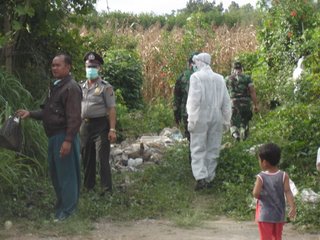Human to Human Transmission

Fantastic. I’m going to address some questions (or implied questions) from readers right away. Michele, Al – you raise some really important topics.
Al asks how many cases of human to human transmission there have been here. The answer is seven – sort of. Samples from Jones and six of his family members revealed they’d contracted a mutated version of the virus, which they caught from each other rather than directly from the chicken. Samples were not taken from an eighth victim, Jones sister, who was buried before investigators arrived in the district. She is generally included in this “Karo cluster” of cases, but only those who were tested are officially counted.
They are the only confirmed cases of human to human transmission in the world, and the mutated strain is considered to have died out with its last victim.
And yes, scientists are saying passage from family member to family member is not surprising, and may indicate a genetic disposition that matched that particular mutation.
I should add that the sickness spread during a family feast where other family members and outsiders were present. Jones wife and two children, for example, had close contact with the virus, but remained healthy – not even carriers.
I was at a conference on bird flu in Indonesia this summer when those results (from the WHO labs) were released. There was a lot of information at the time, and I have to admit the epidemiologists played down the presence of the mutation to such a degree that I missed the biggest news lead of the day. I eventually changed my story – not the facts, but the angle - based on other media reports. The AP has a very good reporter who is assigned to cover bird flu all over the globe, and she led with the mutation story. As I only had one story to file, I decided “Indonesia’s Bird Flu Reporting Network Needs Help” wasn’t as pressing.
Here’s the story I filed for VOA that day. NOTE: some of the information is outdated. The bird flu death toll in Indonesia, for example, is now 45, not 39.
The Karo mutation is not considered to be significant by WHO scientists, and I’m sure they were disappointed to see it was the lead in most media reports (even mine) coming out of that conference.
I asked Dr. Keiji Fukuda, co-ordinator of the WHO's global influenza program, if H5N1 would continue to produce different, more potent versions of itself.
His answer: “It’s a virus. That’s what viruses do.”

